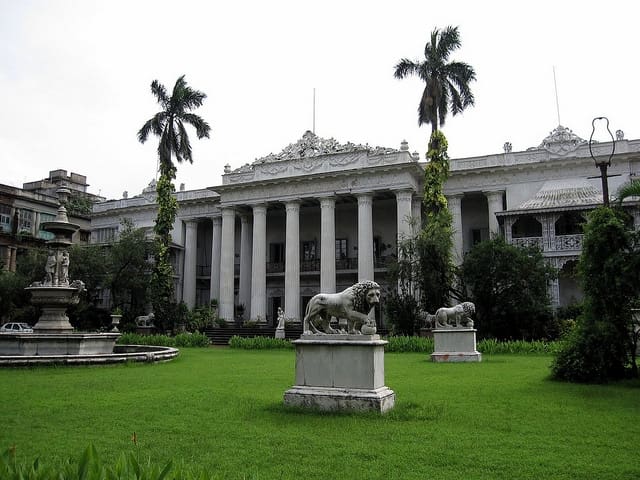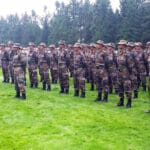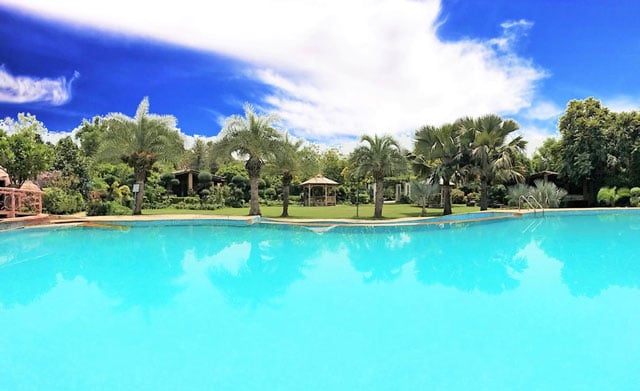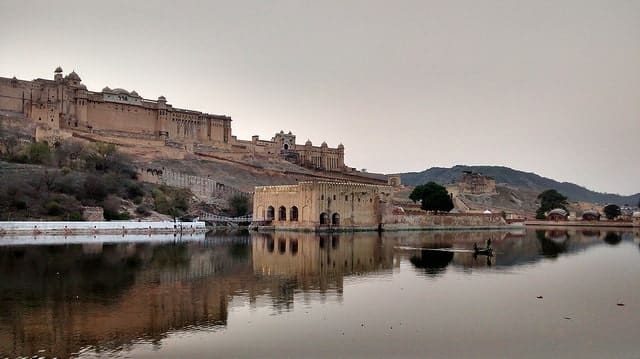Steeped in heritage, pulsating with creativity, and brimming with warmth, Kolkata—the “City of Joy”—offers travelers an unmatched tapestry of experiences. This grand metropolis, once the capital of British India, continues to impress with its splendid colonial architecture, thriving cultural scene, mouthwatering food, and a spirit of intellectual rebellion. Discover the very best of the City of Joy with the top 5 things to do in Kolkata, each outlined in comprehensive detail to enrich your itinerary and ensure you savor the city’s unique essence.
1. Victoria Memorial: The Iconic Crown of Kolkata
A Stunning Symbol of Imperial Grandeur
Rising gracefully within stretches of manicured greenery, the Victoria Memorial is an unmissable destination and a highlight among the best things to do in Kolkata. Modeled after the Taj Mahal, this gleaming white monument blends classical European and Mughal motifs with striking harmony.
Key Features and Visitor Experience
-
Architectural Splendor: Marvel at the imposing central dome, colonnades, and intricate bas-reliefs. The monument, constructed entirely of Makrana marble, captures sunlight at dawn and dusk, creating an ethereal glow—perfect for photography.
-
Art and History Museum: Venture inside to encounter galleries exhibiting nearly 30,000 artifacts, including British Raj memorabilia, rare photographs, evocative oil paintings, antique furniture, weaponry, and textiles.
-
Royal Statuary: Outside, the lush gardens are punctuated by statues of Queen Victoria, Lord Curzon, and other pivotal imperial figures, all set amidst sprawling flower beds and reflective ponds.
-
Light and Sound Show: As twilight falls, behold a mesmerizing sound-and-light show, where projections and narration bring Kolkata’s storied past vividly to life.
-
Peaceful Promenades: Stroll along shaded paths, enjoy the soothing breeze from the water bodies, and watch as locals gather for picnics, morning yoga, and romantic rendezvous.
Focus Keyword: Victoria Memorial Kolkata
2. Howrah Bridge: Crossing the Artery of Kolkata
A Testimony to Human Ingenuity and Bengali Life
An engineering marvel of the 20th century, the Howrah Bridge—officially called Rabindra Setu—unites the two halves of Kolkata across the majestic Hooghly River. Supporting over 100,000 vehicles and countless pedestrians every day, the bridge doesn’t just link points on a map: it connects generations of stories, commerce, and daily hustle.
Experiences Not to Miss
-
Photographer’s Paradise: The interplay of early-morning mist, bustling humanity, and glimmering steel trusses crafts unbeatable photo opportunities. Capture the vibrancy of Kolkata as flower porters and vendors ferry goods to Mullick Ghat Flower Market, Asia’s largest wholesale flower market, under the bridge.
-
A Walk Through Life: Traverse its 705 meters on foot to soak in Kolkata’s pulse firsthand—listen to the clamor, inhale the scent of jasmine and riverine breeze, and watch the city’s life unfold all around.
-
Nighttime Views: As dusk descends, thousands of lights illuminate the bridge, painting a dramatic skyline visible from the riverside ghats and ferries—a memory etched forever.
-
Access to Adventures: With one end anchoring at Howrah Railway Station—the gateway to Eastern India—the bridge is a starting point for deeper ventures into the city.
Focus Keyword: Howrah Bridge Kolkata
3. Dakshineswar Kali Temple: Portal to Bengal’s Spiritual Soul
A Sacred Epicenter Amidst Tranquility
The Dakshineswar Kali Temple, sitting serenely on the Ganges’ northern banks, draws religious pilgrims, spiritual seekers, and the culturally curious. Built by philanthropist Rani Rashmoni in 1855, this revered shrine is dedicated to Goddess Kali, the formidable yet compassionate symbol of Shakti.
Why It’s Unmissable
-
Striking Temple Architecture: Observe the unique ‘Navaratna’ style—nine rising spires capped with elaborate finials. The temple’s ochre and white façade, decked with traditional motifs, forms an unforgettable silhouette against blue skies.
-
Sacred Rituals and Spiritual Vibrance: Witness devotees offering floral tributes and chants that resonate across the complex. Early mornings are ideal for experiencing peaceful rituals as the first rays light the sacred grounds.
-
Legends of Ramakrishna: Pay homage at the chamber of Sri Ramakrishna Paramahamsa, one of India’s greatest spiritual luminaries, who attained enlightenment here and inspired the Ramakrishna Mission.
-
Riverside Serenity: Wander along the ghats (river steps), where priests conduct prayers, and visitors find solace. The gentle river breeze and sight of boats drifting past evoke deep tranquility.
-
Ferry to Belur Math: Take a short scenic ferry ride across the river to Belur Math, headquarters of the Ramakrishna Mission and a symbol of religious harmony reflecting Hindu, Christain, and Islamic design elements.
Focus Keyword: Dakshineswar Kali Temple Kolkata
4. Kolkata Food: A Gastronomic Adventure Through Bengal
The City’s Palate—Inventive, Historic, Unforgettable
Kolkata is synonymous with an evolving, dynamic food scene that bridges the old and the new, from British-era tearooms to street-side stalls dishing out spicy, tangy, and sweet treats. Sampling authentic Kolkata food is not only a feast for the taste buds but also a cultural rite of passage.
Must-Try Experiences
-
Street Food Safaris: Begin with ‘Puchka’—crisp semolina shells stuffed with spicy, tangy water and potatoes—followed by Kathi rolls packed with meats, eggs, or paneer, and Mughlai parathas melting with spiced mince.
-
Sweets for the Soul: Savor signature Bengali sweets—fluffy ‘Roshogolla,’ creamy ‘Sandesh,’ and caramel-kissed ‘Mishti Doi’—available at century-old sweet shops in neighborhoods like Bhawanipore and Shyambazar.
-
Iconic Restaurants: Step inside legendary establishments—Peter Cat for smoky Chelo Kebab, Aminia for aromatic biryani, and Oh! Calcutta for an elegant spread of prawn malai curry, shorshe ilish (mustard hilsa), and kosha mangsho (spicy mutton curry).
-
Tea and Snacks: Embrace the culture of ‘Adda’ (animated conversations) at Indian Coffee House on College Street with dainty cups of milky tea and crispy fish fry.
-
Food Tours: Join heritage food walks or night crawls that introduce visitors to secret gems—hidden North Kolkata eateries, Chinatown dim sum corners, and bustling local markets.
Focus Keyword: Kolkata food, Bengali cuisine
5. Indian Museum and College Street: Kolkata’s Intellectual and Cultural Epicenter
Where Knowledge, Art, and Commerce Intersect
No journey through Kolkata is complete without delving into its intellectual heritage and book-loving traditions. Indian Museum and College Street are pillars of the city’s stature as India’s literary and academic capital.
Indian Museum
-
Legacy of Learning: Established in 1814, it’s the oldest and largest museum in India. Inside, wander across six mammoth sections—Art, Archaeology, Anthropology, Zoology, Geology, and Economic Botany.
-
Treasures Unearthed: Admire world-renowned artifacts like the Egyptian mummy, ancient Buddhist stupa railings, Mughal paintings, rare coins, and fossilized dinosaur bones. The collection is a chronology of civilization itself.
-
Engaging Experiences: Join guided tours for deep dives into thematic galleries or explore interactive children’s zones that intrigue even the youngest minds.
College Street (Boipara)
-
Atmospheric Book Market: Meander through labyrinthine stalls crammed with new, rare, and second-hand books. This “Book Bazaar” is the largest of its kind in Asia and a bibliophile’s outpost.
-
Intellectual Heritage: Rub shoulders with students from Presidency University and other historic colleges who flock here for affordable textbooks and literary classics.
-
Historic Adda at Indian Coffee House: Step into the Coffee House where philosophers, politicians, Nobel laureates, and revolutionaries once held court over endless cups of coffee and spirited conversation.
-
Cultural Detours: Pop into hidden publishing houses, poetry reading sessions, and vintage poster shops that abound in the area.
Focus Keyword: Indian Museum Kolkata, College Street Kolkata
Luxury and Unconventional Experiences in Kolkata
The above five pillars only scratch the surface. Kolkata entices with layers of unique, offbeat activities for those seeking even deeper discoveries.
Kumartuli: The Potter’s Quarter
Walk through narrow, lively alleyways where artisans sculpt clay idols—especially of Goddess Durga—each an artwork in progress. Watching idol-making ahead of Durga Puja is an unforgettable cultural spectacle.
Tram Rides and Heritage Tours
Board an iconic tram from Esplanade, winding through bustling streets straight out of a colonial-era painting. Heritage walks around Dalhousie Square, Marble Palace, and South Park Street Cemetery reveal hidden architectural gems.
Ghats and River Cruises
Enjoy a sunset boat ride from Princep Ghat, flanked by marble colonnades and breezy gardens, with views that evoke British Raj nostalgia. Take a luxury river cruise for evening panoramas of the city lights.
Cultural Festivals
Time your visit around Durga Puja—Kolkata’s biggest festival—when the city explodes in color, artistry, and unbridled revelry with ornate pandals, processions, and community feasts.
Best Time to Visit Kolkata
Visit between October and March for clear blue skies, balmy weather, and a non-stop calendar of festivals and cultural events. Winter brings out Kolkata’s beauty, with pleasant days perfect for sightseeing, shopping, and riverside strolls.
Practical Tips for First-Time Visitors
-
Metro and Transport: The Kolkata Metro is fast, clean, and affordable. Supplement with yellow ambassador taxis, trams, or auto-rickshaws for a dose of local charm.
-
Cultural Etiquette: Dress conservatively when visiting religious sites. Always ask before taking photos—especially of people, temples, and artwork.
-
Shopping Recommendations: New Market for traditional wares, Gariahat for handlooms, and Dakhinapan for craft souvenirs. Don’t forget to taste Kolkata’s renowned sweets before you leave!
-
Language: Bengali is widely spoken. English and Hindi are understood by most.
FAQs About Kolkata: Detailed Insights
-
What is the best time to visit Kolkata?
October to March ensures pleasant weather and the chance to enjoy lively festivals like Durga Puja. -
Which food is Kolkata famous for?
Kolkata is celebrated for puchka, kathi rolls, biryani, fish dishes, and sweets like roshogolla and mishti doi. -
Is the Howrah Bridge open to pedestrians?
Yes. Walking across the bridge offers unfiltered views of the river and city life: a must for photographers. -
Is photography allowed inside Victoria Memorial?
Photography is permitted in the gardens and public spaces, but not inside all museum galleries. Always check signage. -
How much time should be allocated for the Indian Museum?
Set aside at least 2–3 hours to enjoy the exhibitions meaningfully. Some art and history enthusiasts spend an entire day. -
Are guided tours available in Kolkata?
Guided walking, food, and heritage tours abound, offering everything from history to street food safaris. -
Where to shop for souvenirs in Kolkata?
New Market, College Street, and Gariahat feature great options for textiles, books, and traditional crafts. -
Is public transportation reliable in Kolkata?
Kolkata’s metro, trains, trams, and ferries are budget-friendly, efficient, and connect most city attractions. -
What are some family-friendly attractions?
Science City, Eco Park, Nicco Park, Alipore Zoo, and the ever-popular Victoria Memorial. -
Is Kolkata safe for solo travelers?
Kolkata ranks among India’s safest metros, but it’s wise to avoid isolated areas after dark. -
Where to stay in Kolkata for easy sightseeing?
Park Street, Ballygunge, and Salt Lake neighborhoods offer excellent transport links and amenities. -
Can I take a river cruise on the Hooghly?
Multiple river cruises—ranging from ferries to luxury boats—provide stunning city views throughout the day and night. -
What are the top spots for experiencing Durga Puja in Kolkata?
Kumartuli, College Square, Bagbazar, and Behala rival each other in creative and lavish Durga Puja decorations. -
How to reach Dakshineswar Kali Temple?
Take a local train to Dakshineswar station, a taxi, or a scenic ferry from Prinsep Ghat or Belur Math. -
Which languages are prominent in Kolkata?
Bengali is primary, with English and Hindi widely used in business and tourism sectors.






















